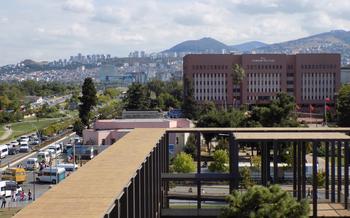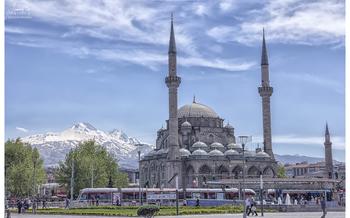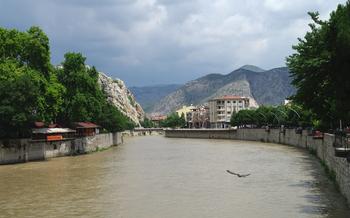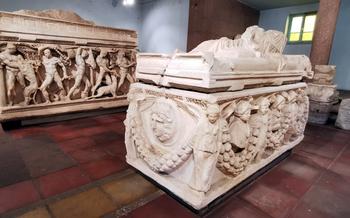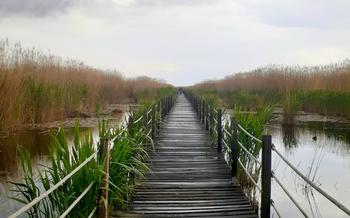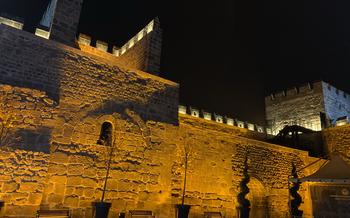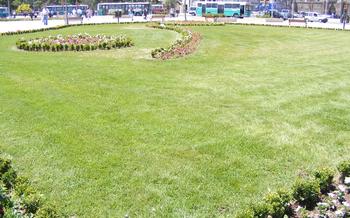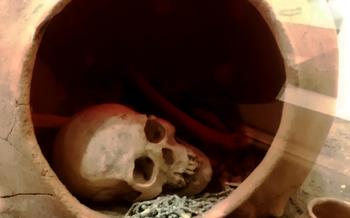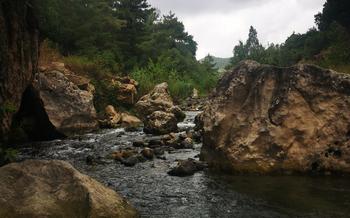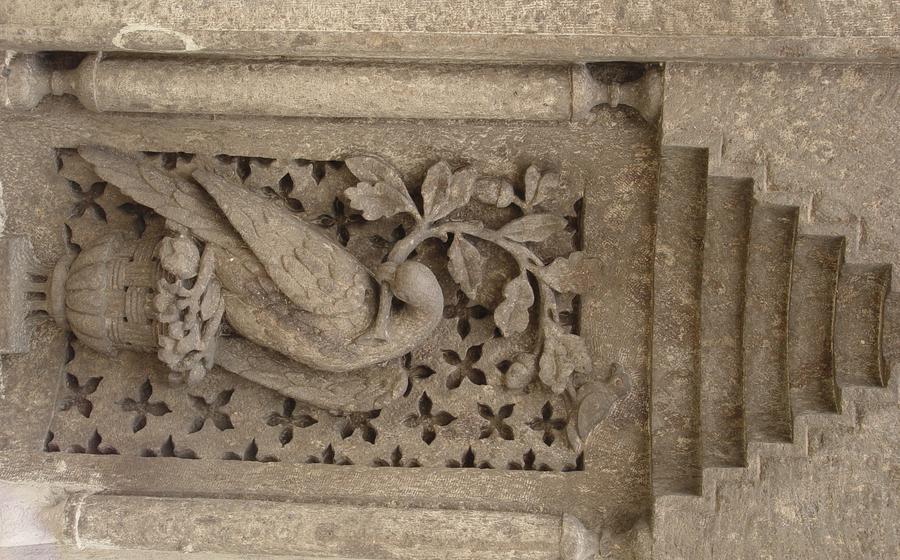
Ethnography Museum
- A Journey Through History and Culture: Kayseri Ethnography Museum
- Navigating the Museum's Treasures: A Comprehensive Guide
- Unveiling Anatolian Handicrafts: A Tapestry of Skills
- Exploring the Nomadic Lifestyle: A Glimpse into a Transient Past
- A Culinary Journey: Flavors of Kayseri
- The Art of Carpet Weaving: A Masterpiece of Patience
- Jewelry and Adornment: A Reflection of Cultural Identity
- Pottery and Ceramics: Shaping Clay into Art
- Metalworking and Silversmithing: Forging Beauty from Metal
- Textiles and Embroidery: Threads of Tradition
- Music and Dance: Rhythms of Anatolia
- The City of Kayseri: A Historical and Cultural Hub
- Planning Your Visit: Practical Tips and Recommendations
- Insider Tip: Discovering Hidden Treasures
A Journey Through History and Culture: Kayseri Ethnography Museum
Kayseri Ethnography Museum stands as a testament to the rich tapestry of history and culture that defines this vibrant region of Turkey. Established in 1969, the museum is housed within the restored stone building of the Gıyaseddin Keyhüsrev Madrasa, a magnificent architectural relic dating back to the 13th century. With its intricate carvings and imposing presence, the building itself is a work of art, serving as a fitting backdrop for the treasures within.
The museum's mission is to preserve and showcase the cultural heritage of Kayseri, a region renowned for its diverse traditions and craftsmanship. Through its extensive collection of artifacts, the museum tells the story of the people who have inhabited this land for centuries, their way of life, and their contributions to Turkish culture.
The Ethnography Museum holds immense significance in promoting and protecting Turkey's cultural heritage. It serves as a vital resource for scholars, researchers, and students, providing them with a wealth of information about Anatolian culture and history. Furthermore, the museum plays a crucial role in educating the public about the importance of preserving and celebrating their cultural traditions.
One local resident fondly recalled how the museum sparked their childhood fascination with history. As a young child, they would often visit the museum with their grandparents, who would regale them with tales of the artifacts on display. These visits instilled in them a deep appreciation for their cultural heritage, shaping their identity and inspiring them to pursue a career in cultural preservation.
Navigating the Museum's Treasures: A Comprehensive Guide
Visiting the Ethnography Museum in Kayseri is an immersive journey into the heart of Turkish culture. Practical information is essential for a seamless experience. The museum operates daily, except Mondays, from 8:30 AM to 5:30 PM. Admission fees are reasonable, and guided tours are available for a deeper understanding of the exhibits.
The museum's layout is well-organized, with exhibits arranged chronologically and thematically. Each gallery offers a glimpse into a different aspect of Turkish history and culture. Highlights include the exquisite collection of carpets, renowned for their intricate designs and vibrant colors. The jewelry section showcases stunning pieces that reflect Turkey's rich goldsmithing tradition. Handcrafted pottery, metalwork, and textiles further enhance the museum's diverse collection.
A personal experience within the museum's walls left an unforgettable impression. In the weaving gallery, I encountered a mesmerizing carpet depicting a traditional Turkish motif. The intricate knotting and vibrant colors captivated me, a testament to the skill and patience of the artisan who created it.
Unveiling Anatolian Handicrafts: A Tapestry of Skills
Anatolian handicrafts, showcased within the Kayseri Ethnography Museum, represent a rich tapestry of skills and artistry that have been passed down through generations. Visitors can marvel at the intricate patterns and designs woven into carpets, the delicate filigree of jewelry, and the finely crafted pottery and ceramics.
Traditional weaving techniques, using looms and natural fibers, produce carpets that are both visually stunning and durable. The vibrant colors and intricate motifs reflect the cultural heritage of the region, with each design telling a unique story.
Pottery and ceramics, shaped from the local clay, showcase the skill of artisans who transform ordinary earth into works of art. From simple earthenware vessels to intricately glazed ceramics, each piece bears the mark of the potter's hand.
Metalworking, a craft with a long history in Kayseri, is represented by a stunning array of silverware, copperware, and brassware. Artisans demonstrate traditional techniques such as hammering, engraving, and chasing, creating objects that are both functional and aesthetically pleasing.
Exploring the Nomadic Lifestyle: A Glimpse into a Transient Past
The Kayseri Ethnography Museum sheds light on the rich nomadic traditions that once thrived in the region. Step into the nomadic tent, a symbol of a transient lifestyle, and immerse yourself in the culture of these wandering tribes. Marvel at the traditional utensils, clothing, and tools that tell stories of a life lived in harmony with nature's rhythms.
Discover the historical context of nomadism in Turkey and its profound impact on the region's culture. Learn how these nomadic communities navigated the vast Anatolian plains, adapting to seasonal changes and relying on their ingenuity to survive.
As you explore the museum's exhibits, you'll encounter a reenactment of a nomadic camp, transporting you back in time. Experience the simplicity and resilience of these communities as you witness their daily routines and rituals. The museum brings to life the nomadic heritage of Kayseri, offering a glimpse into a way of life that has shaped the region's identity.
A Culinary Journey: Flavors of Kayseri
The Ethnography Museum in Kayseri offers a tantalizing glimpse into the region's rich culinary traditions. Visitors can explore displays of traditional ingredients, spices, and cooking utensils, gaining insights into the unique flavors and aromas that define Kayseri cuisine.
The museum's exhibits showcase the historical evolution of Kayseri's culinary heritage, tracing the influences of neighboring regions and the nomadic lifestyle that once dominated the area. Visitors can learn about the region's signature dishes, such as mantı (Turkish ravioli), keşkek (a hearty wheat and meat stew), and pastırma (cured beef), and their significance within Turkish society.
To enhance the culinary experience, the museum often hosts cooking demonstrations and workshops, where visitors can interact with local chefs and learn to prepare traditional Kayseri dishes. These hands-on experiences provide a deeper understanding of the region's culinary traditions and allow visitors to savor the authentic flavors of Kayseri cuisine.
One memorable anecdote shared by a museum guide highlights the passion and dedication of local cooks. The guide recounted the story of a beloved family recipe for mantı, passed down through generations. The recipe, which involved meticulously folding and stuffing tiny dough pockets with minced meat, was a testament to the patience and skill required in Kayseri's culinary traditions.
The Art of Carpet Weaving: A Masterpiece of Patience
The Kayseri Ethnography Museum houses a remarkable collection of carpets, each a testament to the intricate artistry and cultural heritage of the region. These carpets, handwoven on traditional looms using natural fibers like wool and cotton, showcase the diverse weaving techniques and designs that have been passed down through generations.
One of the highlights of the museum's carpet collection is a stunning prayer rug that dates back to the 18th century. The rug features an intricate geometric pattern in shades of red, blue, and green, with a central medallion that symbolizes the mihrab, the niche in a mosque that indicates the direction of Mecca. The intricate knotting and meticulous attention to detail in the rug are a testament to the skill and dedication of the weaver.
Another notable piece is a large tribal carpet from the Yörük tribe, a nomadic people who once roamed the Anatolian steppes. The carpet is adorned with vibrant colors and bold geometric patterns that reflect the nomadic lifestyle and the tribe's deep connection to nature. The use of symbols and motifs in the carpet also holds cultural and spiritual significance for the Yörük people.
In addition to these historical pieces, the museum also showcases contemporary carpets that demonstrate the evolution of weaving techniques and designs. These modern carpets often incorporate innovative patterns and colors, while still paying homage to traditional motifs.
Visitors to the museum can also witness live demonstrations of carpet weaving, where skilled artisans use traditional looms to create their masterpieces. These demonstrations provide an opportunity to learn about the intricate process of carpet weaving and appreciate the skill and patience required to create these beautiful works of art.
Jewelry and Adornment: A Reflection of Cultural Identity
In the realm of Turkish culture, jewelry holds a profound significance, transcending mere adornment to become an integral part of personal identity and social expression. The Kayseri Ethnography Museum showcases an exquisite collection of jewelry pieces that offer a glimpse into the rich traditions and craftsmanship of the region. From intricate necklaces and bracelets to delicate earrings and brooches, each piece is a testament to the artistry and skill of local artisans.
The museum's jewelry collection spans various historical periods, showcasing the evolution of styles and techniques. Visitors can admire the intricate filigree work of Ottoman-era jewelry, featuring delicate gold and silver threads interwoven into elaborate patterns. Traditional Turkish motifs, such as the evil eye and the tulip, are prominently displayed, symbolizing protection, good luck, and beauty.
Beyond its aesthetic appeal, jewelry in Kayseri carries deep cultural significance. It often serves as a symbol of status, wealth, and family heritage, with certain pieces passed down through generations as cherished heirlooms. Brides in the region traditionally wear elaborate gold jewelry, which is believed to bring prosperity and happiness to their new life.
The museum's collection also includes examples of jewelry made from unconventional materials, such as amber, coral, and semi-precious stones. These pieces reflect the influence of nomadic tribes and neighboring cultures, demonstrating the diverse influences that have shaped Kayseri's jewelry-making traditions.
Through its stunning display of jewelry, the Kayseri Ethnography Museum offers visitors a unique opportunity to explore the cultural identity and craftsmanship of the region. Each piece tells a story of tradition, artistry, and the enduring allure of adornment in Turkish society.
Pottery and Ceramics: Shaping Clay into Art
The Kayseri Ethnography Museum houses a remarkable collection of pottery and ceramics, showcasing the region's rich tradition in this ancient craft. Visitors can marvel at a diverse array of pottery styles, from traditional earthenware to intricate glazed ceramics. Each piece tells a story of the skill and artistry of local artisans.
The museum's collection includes examples of unglazed redware, a technique that has been practiced in the Kayseri region for centuries. These simple yet elegant vessels were used for everyday purposes, such as storing food and water. Also on display are glazed ceramics, which feature a variety of colors and patterns. These pieces were often used for decorative purposes, such as plates, bowls, and vases.
The museum also provides insights into the firing and glazing techniques used by local artisans. Visitors can learn about the traditional kilns that were used to fire the pottery, as well as the various glazes that were applied to create different colors and effects.
Personal Experience: A Pottery-Making Workshop
During my visit to the museum, I had the opportunity to participate in a pottery-making workshop. Under the guidance of a skilled artisan, I learned the basics of clay preparation, wheel throwing, and glazing. It was a fascinating experience to work with the clay and create my own unique piece of pottery. After a few hours of shaping and glazing, I had created a small bowl that I will cherish as a reminder of my time at the Kayseri Ethnography Museum.
Metalworking and Silversmithing: Forging Beauty from Metal
Kayseri has a long and distinguished history of metalworking, dating back to the Hittite Empire. The city's artisans were renowned for their skill in forging iron, copper, and silver into intricate and beautiful objects. The Ethnography Museum showcases a stunning collection of metalwork from the region, including finely crafted silverware, copperware, and brassware.
Visitors can marvel at the intricate designs and delicate craftsmanship of these objects, which range from simple household items to elaborate ceremonial pieces. The museum also features a demonstration area where visitors can watch skilled artisans at work, using traditional techniques to create new pieces of metalwork.
One particularly striking piece in the collection is a large silver tray that was made in the 17th century. The tray is decorated with intricate engravings depicting scenes from Turkish history and mythology. It is a testament to the skill and artistry of the Kayseri metalworkers who created it.
Another highlight of the collection is a collection of copper pots and pans that were used by nomadic tribes in the Kayseri region. These pots and pans are often decorated with simple but elegant designs, and they provide a glimpse into the lifestyle of these nomadic people.
The metalworking tradition in Kayseri is still alive today, and the city is home to many talented silversmiths and coppersmiths. Visitors to the Ethnography Museum can purchase unique and beautiful metalwork pieces as a reminder of their visit to Kayseri.
Textiles and Embroidery: Threads of Tradition
The Kayseri Ethnography Museum boasts a vibrant collection of textiles and embroidery that showcases the region's rich needlework traditions. Visitors can marvel at colorful fabrics, traditional costumes, and intricately embroidered goods, each piece a testament to the skill and artistry of local artisans.
Embroidery, in particular, holds a special place in Turkish culture. The museum's collection features a diverse array of embroidered items, from delicate handkerchiefs and tablecloths to elaborate wall hangings and ceremonial garments. Visitors can admire the intricate motifs and patterns that adorn these textiles, each stitch telling a story of tradition, identity, and craftsmanship.
The museum's displays also provide insights into the symbolism and cultural significance of Turkish embroidery. Common motifs include flowers, birds, and geometric designs, each carrying its own meaning and representing different aspects of Turkish culture and folklore. Visitors can learn about the role of embroidery in traditional ceremonies, such as weddings and religious festivals, where intricately embroidered textiles play a central role in the festivities.
To further enhance the visitor experience, the museum offers hands-on embroidery workshops, allowing visitors to try their hand at this traditional craft. Under the guidance of experienced instructors, participants can learn basic stitches and patterns, creating their own unique embroidered pieces to take home as a cherished souvenir of their visit to the Kayseri Ethnography Museum.
Music and Dance: Rhythms of Anatolia
The Kayseri Ethnography Museum not only preserves tangible artifacts but also celebrates the intangible heritage of the region through its collection of musical instruments and displays on traditional dance. Visitors can marvel at the intricate designs and craftsmanship of bağlamas, zurnas, and other instruments that have filled Anatolian nights with melodies for centuries. The museum's exhibits provide insights into the different types of folk dances performed in the region, showcasing the vibrant and expressive movements that tell stories of love, joy, and celebration. Whether it's the rhythmic footwork of the halay or the graceful twirls of the sema, these dances are a testament to the rich cultural tapestry of Kayseri.
Personal Experience: A Mesmerizing Performance
During my visit to the museum, I had the privilege of witnessing a live performance by a local folk dance troupe. The dancers, adorned in colorful traditional costumes, moved with grace and precision, their bodies swaying to the rhythm of the music. The bağlama's soulful melodies and the zurna's piercing notes filled the air, creating an atmosphere of enchantment. As I watched the dancers whirl and spin, I felt transported to another time, where ancient traditions came alive before my eyes. It was a truly mesmerizing experience that left me with a deep appreciation for the vibrant cultural heritage of Kayseri.
The City of Kayseri: A Historical and Cultural Hub
Kayseri, a city steeped in history and culture, lies at the heart of Anatolia. Its strategic location at the crossroads of ancient trade routes has made it a melting pot of civilizations throughout the ages. From the Hittites to the Romans, Byzantines to Seljuks, and Ottomans, Kayseri has witnessed the rise and fall of empires, leaving behind a rich legacy of architectural wonders and cultural traditions.
The city's architectural landmarks stand as testaments to its diverse past. The majestic Hunat Hatun Mosque, built in the 13th century, showcases exquisite Seljuk craftsmanship with its intricate stone carvings and towering minarets. The Church of St. Gregory the Illuminator, dating back to the 4th century, offers a glimpse into Kayseri's early Christian heritage. The Grand Bazaar, a labyrinth of colorful shops and stalls, echoes with the sounds of haggling merchants and the aroma of traditional spices, transporting visitors back in time to the city's bustling trading days.
Beyond its historical treasures, Kayseri is renowned for its vibrant cultural scene. The city hosts numerous festivals and events throughout the year, celebrating its rich traditions and folklore. The annual Kayseri International Film Festival showcases a diverse range of films from around the world, while the Kayseri Music Festival brings together renowned musicians and performers for a week of musical extravaganza.
Kayseri's cuisine is a culinary delight, blending flavors from different cultures that have graced the city over the centuries. From the mouthwatering mantı, delicate dumplings topped with yogurt and garlic sauce, to the hearty Kayseri pastırması, air-dried beef with a unique smoky flavor, the city's dishes are a testament to its rich culinary heritage.
As you wander through the streets of Kayseri, you'll encounter friendly locals who are proud of their city's history and traditions. They'll gladly share stories about their culture, recommend hidden gems to explore, and invite you to join in their celebrations. Whether you're a history buff, a culture enthusiast, or simply a traveler seeking authentic experiences, Kayseri promises an unforgettable journey into the heart of Anatolia.
Planning Your Visit: Practical Tips and Recommendations
To make the most of your visit to the Kayseri Ethnography Museum, careful planning is essential. While the museum is open year-round, the best time to visit Kayseri is during the spring or fall, when the weather is pleasant and the city is less crowded. For a truly immersive experience, plan to spend at least two to three hours exploring the museum's exhibits.
When it comes to dining options, there are several local restaurants near the museum that serve traditional Turkish cuisine. For a memorable culinary experience, try the famous Kayseri mantı, a type of Turkish ravioli served with garlic yogurt sauce. To enhance your understanding of Kayseri's history and culture, consider booking a guided tour of the museum, available in various languages.
Beyond the museum, Kayseri offers a wealth of historical and cultural attractions. Explore the city's iconic landmarks, such as the Hunat Hatun Mosque, the Kayseri Castle, and the Gevher Nesibe Medresesi. For a glimpse into the city's vibrant past, visit the Kayseri Archaeological Museum, which houses artifacts from the region's rich history.
For a unique perspective of Kayseri, head to the panoramic terrace of the Kayseri Hilton Hotel, which offers breathtaking views of the city and the surrounding mountains. As you sip on a cup of Turkish coffee, let the beauty of Kayseri unfold before your eyes, a perfect ending to your exploration of this captivating city.
Insider Tip: Discovering Hidden Treasures
Beyond the main exhibits, the Ethnography Museum holds secret corners that offer unique perspectives and lesser-known artifacts. One such treasure is a small room tucked away on the upper floor, where a collection of ancient manuscripts and scrolls is preserved. These delicate documents, written in various scripts and languages, provide a glimpse into the region's rich literary and historical heritage.
During my visit, I had the privilege of meeting a passionate museum curator who shared fascinating stories about the museum's hidden gems. She showed me a beautifully illustrated manuscript from the 16th century, depicting scenes from the life of the Prophet Muhammad. She explained how this rare manuscript had been meticulously restored and preserved, thanks to the museum's ongoing conservation efforts.
Local events and festivals also offer a chance to experience Kayseri's cultural heritage beyond the museum walls. The annual Kayseri Carpet Festival, held in the spring, is a vibrant celebration of the region's renowned carpet-weaving traditions. Visitors can witness skilled artisans demonstrating their craft, admire stunning carpet displays, and even purchase unique handmade carpets as souvenirs.
For those seeking a deeper dive into Kayseri's history and culture, I recommend exploring the works of local authors and historians. Books like "Kayseri: A City of History and Culture" by Ahmet Uysal provide insightful narratives and detailed descriptions of the city's landmarks and traditions. Documentaries such as "The Heart of Anatolia: Kayseri" offer a visual journey through the region's past and present, showcasing its natural beauty, cultural diversity, and architectural wonders.
My personal insider tip is to visit the museum's rooftop terrace, which offers a breathtaking panoramic view of the city. From this vantage point, you can admire the majestic Mount Erciyes, the sprawling cityscape, and the museum's beautiful architecture. It's the perfect spot to soak in the atmosphere of Kayseri and reflect on the rich cultural heritage preserved within its walls.

